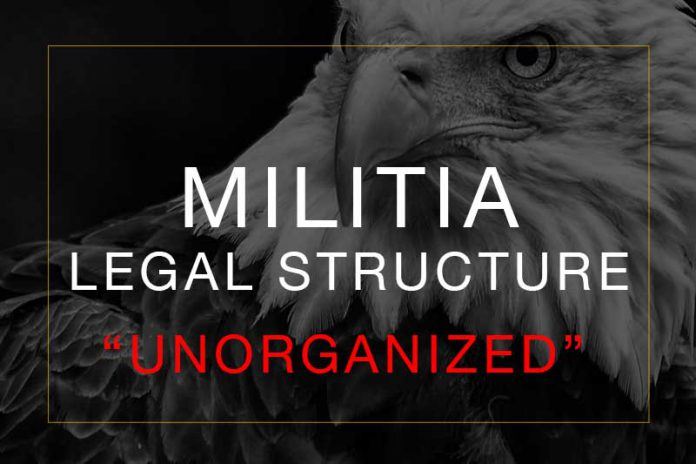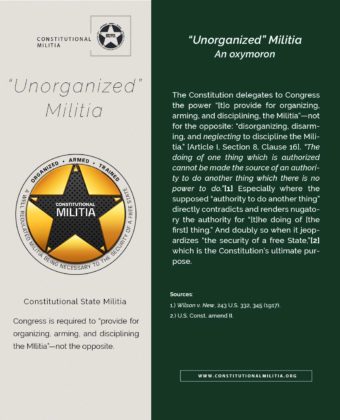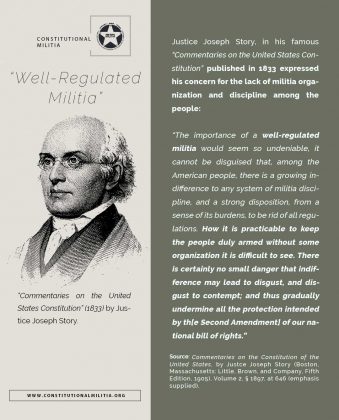Oxymoronic “Unorganized” Militia
The very idea of an “unorganized”, and therefore “unarmed” and “undisciplined”, “militia” must be one of the most perverse and dangerous subterfuges and subversions of the Constitution ever to be insinuated into America’s legal system. Piercing this kind of statutory conundrum depends upon a detailed understanding of what constitutional Militia actually are as the Constitution uses that term.
Oxymoronic “Unorganized” Militia
Notwithstanding that the clauses in the original Constitution pertaining to “the Militia of the several States”[1] and the Second and Fifth Amendments all speak with one clear and consistent voice, and notwithstanding that they are all parts of the selfsame “supreme law of the Land”[2]—which “[t]he Senators and Representatives [in Congress]” as well as “the Members of the several State Legislatures, and all executive and judicial Officers, both of the United States and of the several States, shall be bound by Oath or Affirmation, to support”[3]—the Constitution’s commands remain unfulfilled. Worse yet, not withstanding that “[T]he Militia of the several States” are the constitutional institutions which, properly organized, would secure WE THE PEOPLE’S “right to keep and bear Arms” and maximize its political significance and practical efficacy. Yet next to no Americans know anything about them today. The reason for this Justice Story pinpointed long ago:
“[T]hough * * * the importance of a well-regulated militia would seem so undeniable, it cannot be disguised that, among the American people, there is a growing indifference to any system of militia discipline, and a strong disposition, from a sense of its burdens, to be rid of all regulations. How it is practicable to keep the people duly armed without some organization it is difficult to see. There is certainly no small danger that indifference may lead to disgust, and disgust to contempt; and thus gradually undermine all the protection intended by th[e Second Amendment] of our national bill of rights.”[4]
Story wrote his concerns in the mid-1800s. Unfortunately, his insight into the “growing indifference” among Americans has proven all to prophetic. For what he recorded only in its beginnings has come to pass in full in modern times: both with respect to the Second Amendment—as evidenced by the plethora of plainly unconstitutional “gun control” statutes on the books at the National, State, and Local levels; and also, to an even greater degree, with respect to the Militia Clauses of the Constitution[5]—as evidenced by the way the General Government and the States have cordoned off as impotent and useless in the so-called “unorganized militia” a huge portion of the population, with next to no complaints from anyone.
For the prime example, the foundational contemporary Congressional statute that purports to deal with the Militia is fundamentally flawed:
(a) The Militia of the United States Consists of all able-bodied males at least 17 years of age * * * under 45 years of age who are, or who have made a declaration of intention to become citizens of the United States and female citizens of the United States who are members of the National Guard.
(b) the classes of the militia are—
(1) the organized militia, which consists of the National Guard and the Naval Militia; and
(2) the unorganized militia, which consists of the members of the militia who are not members of the National Guard or Naval Militia.[6]
The problems here are that—
Inasmuch as “[a]ffirmative words are often, in their operation, negative of other objects than those affirmed”,[7] the constitutional power of Congress “[t]o provide for organizing, arming, and disciplining, the Militia” [8] absolutely precludes Congress’s exercise of any imaginary contradictory power either to leave any part of “the Militia of the several States” unorganized, unarmed, and undisciplined, or to refuse “[t]o make all laws * * * necessary and proper” for preparing “the Militia of the several States” for “the service of the United States”.[9] Thus on the very face of the Constitution “the unorganized militia” is an oxymoron. [10]
The primary purpose of the Militia is not simply military, but ultimately political in nature. After all, it is “[p]olitical power [that] grows out of the barrel of a gun”.[11] The Militia are “necessary to the security of a free State”[12]—and therefore without the Militia either “a free State” will lack “security”, or the “security” that does arise from some other source will support a “State” that is other than “free”. Indeed, precisely because the Militia are not only “necessary to the security of [every] free State” but also integral parts of the Constitution’s federal system, the likelihood is that, without the Militia, the entire Constitution will fail, and America’s present form of government will become destructive of the ends for which it was instituted.[13]































